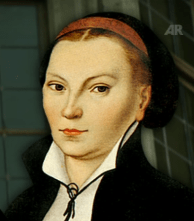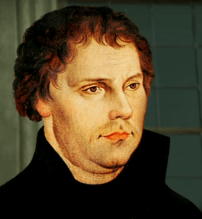
Katharina von Bora found herself virtually imprisoned as a nun at the Cistercian Convent of Nimbschem, Germany, in the sixteenth century. Relatives were unable to speak to her except through a latticed window, and she was even forbidden to talk to her fellow nuns. Silence was the rule at Cistercian Convent.

Katherine managed to smuggle in reading material—the writings of a man named Martin Luther—and she began hoping for new life. In 1523 she and several other nuns hatched an escape plan, and they sneaked word to Luther. He recruited a merchant who sold smoked herring. The man-made a delivery to the convent and when he left, the nuns were stowed away in the empty herring barrels.
Luther succeeded in finding husbands for all the women except for Katherine, a strong-willed, 26-year-old redhead. At length, he proposed to her. The account of their wedding night by Luther’s biographer, Richard Friedenthal, leaves us … well, curious:
On the evening of 13 June 1525, according to the custom of the day, (Luther) appeared with his bride before a number of his friends as witnesses. The Pomeranian [Johann] Bugenhagen blessed the couple, who consummated the marriage in front of the witnesses, [Justus] Jonas reported the next day: “Luther has taken Katharina von Bora to wife. I was present yesterday and saw the couple on their marriage bed. As I watched this spectacle I could not hold back my tears.”*
The marriage created a storm of criticism in church circles across Europe. Erasmus called it a comedy and Henry VIII called it a crime (as if he should talk!). But Luther said, “I would not change my Katie for France and Venice, because God has given her to me.” She proved equal to her role as Protestantism’s first pastor’s wife, becoming known as the “First Lady of the Reformation.”
Her words are sensible, And her advice is thoughtful. … Her husband says, “There are many good women, but you are the best!” (Proverbs 31:26,28–29)
Robert J. Morgan, On This Day: 265 Amazing and Inspiring Stories About Saints, Martyrs & Heroes, electronic ed. (Nashville: Thomas Nelson Publishers, 2000, c1997). June 11.
* Richard Friedenthal, Luther: His Life and Times, trans. John Nowell (New York: Harcourt Brace Jovanovich, 1970), p. 438, quoted in Ruth A. Tucker and Walter Liefeld, Daughters of the Church (Grand Rapids: Zondervan Publishing House, 1987), p. 180.
ALSO ON THIS DAY
1749 – In Germany, John Henry Schramm ordains Philip William Otterbein, who became a notable evangelist and leader of the United Brethren movement in America.
1857 – David E. Campbell, missionary to India, with his wife and two children were put to death by Nana Sahib, a rebel chief.
1903 – A. J. Tomlinson led an assembly that created the Church of God of Prophecy(Cleveland), a Pentecostal-Holiness group that considered the years from the Council of Nicaea in 325 until 1903 as the dark ages of the church. Over the next century, the new denomination gathered more than a million adherents worldwide.
Accessed ChristianHistoryInstitute.org 12 June 2022.

Was that a tradition, at the time?
LikeLike
If memory serves me correctly Tam yes. But here is a link to give you more information. https://en.wikipedia.org/wiki/Bedding_ceremony
LikeLiked by 1 person
I remember watching several movies with my husband where the Royal Marriage had to be consummated and the (act) witnessed by the Nobles in Britain!!
I will definitely check it out. Thanks c.f!
LikeLike
You are welcome Tam. And thanks for stopping by. Have a blessed and prosperous week. Blessings and Peace!
LikeLiked by 1 person